Whether reconfiguring machinery to produce masks or improving pocket spring units to help the environment, the company seeks to solve problems
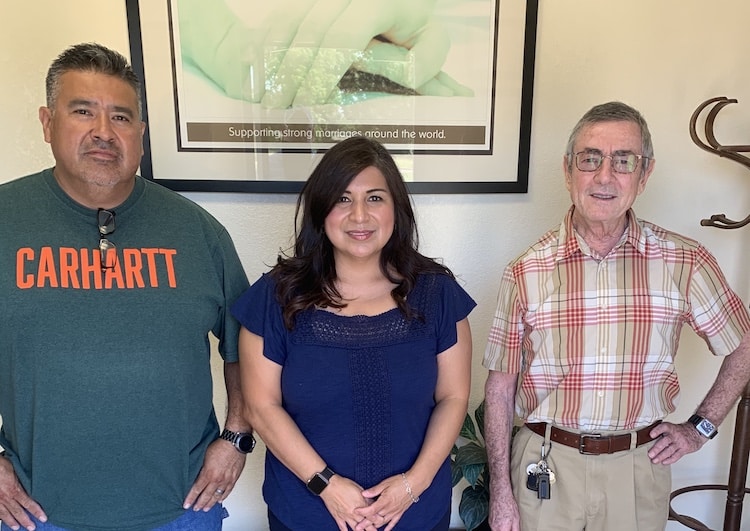
Martin Wolfson has a knack for turning challenges into opportunities. Faced with furloughing his entire staff at Texas Pocket Springs Technology during the state’s stay-at-home pandemic order in April, for example, he quickly shifted the operation to mask manufacturing.
The switch enabled the company to keep one production line open, while donating much-needed protective gear to local essential workers. Wolfson’s team — led by chief engineer Lonnie Johnson — adapted existing technology to fabricate the masks, which incorporate the same polypropylene fabric Texas Pocket Springs uses for its pocket spring modules.
Wolfson, owner and chief executive officer of Texas Pocket Springs in Alvarado, Texas, delivered the first batch of masks to Keene Fire Rescue, followed quickly by 1,000 masks to police, fire and emergency services personnel in nearby Cleburne. Since the demand for personal protective equipment for essential workers is likely to remain strong for some time to come, Wolfson plans to apply for certification from the state as a health care product manufacturer to produce N95 masks as a sideline to pocket spring production. The company is capable of producing 1,000 masks per day.
“We’re a small community where everyone looks out for each other,” Wolfson says of the town south of Fort Worth. “When I saw the news about the shortages of these masks, I knew we could figure out a way to help out.”
Thinking green
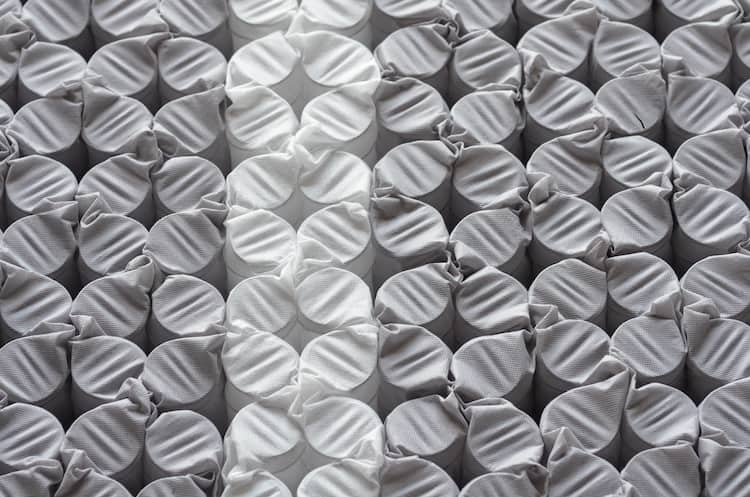
Similarly, when it comes to his core business of making belted Quad Coil pocket innersprings for bedding and upholstered furniture, Wolfson says he is working hard to prepare for another big challenge — “the need to pivot toward more sustainable and truly recyclable products.”
Wolfson took his first big step toward this goal in 2016, when he developed the GlueLess Innerspring Assembler. The system, which has been enhanced and refined with additional patented technology, is the “first of its kind to produce a pocketed innerspring without using any glue,” Wolfson says. Instead of glue, the system uses a series of strong thermally welded bonds that “produce a more durable innerspring with increased stability.”
Eliminating glue cuts shipping costs by reducing the weight of a typical innerspring unit by as much as 3 pounds, Wolfson says. The GlueLess Innerspring Assembler also boosts productivity, “since there is very little machine or labor downtime” associated with cleaning and maintenance, he says. In addition, the machine’s thermally welded bonds are more durable and hold up better in extreme temperatures — unlike some glues, which can become brittle in extreme cold or less secure in scorching heat. Both conditions can occur when mattresses are shipped in semitrailers, affecting mattress quality.
But the best feature of the GlueLess Innerspring Assembler, in Wolfson’s opinion, is the one that drove him to create the machine in the first place. By eliminating glue, “we are reducing the environmental footprint and producing a sustainable innerspring that is completely recyclable,” he says.

“Environmental organizations continue to push for total recycling of mattresses, and state legislatures and agencies are enacting more laws and regulations regarding mattress recycling,” Wolfson says. “With the present environmental consciousness and heightened sense of social responsibility, consumers also will demand more sustainable products. As a result, pressure is building for the industry to find ways to recycle more mattresses.”
Mattress recyclers have no trouble stripping apart the fabric and foam in a typical mattress, Wolfson says. And it’s also a simple task to melt and recycle scrap metal — “folks have done that for decades,” he adds.
Yet when it comes to breaking down pocket coil mattresses for recycling, the process is a bit more complicated. Each steel spring typically is encased in spun-bond polypropylene and then the rows of springs are attached with glue. The springs have to be removed from their pockets in order to recycle the steel. The spun-bond polypropylene fabric is 100% recyclable, provided it has not been contaminated with glue.
To encourage recycling of pocket spring mattresses, Wolfson and his team are developing new technology to make the process simpler, faster and more cost-efficient. “We need to find a new way to handle these mattresses at the end of their life,” he says. “Many landfills will no longer take them, and we need to find a better option.”
Passion for pockets
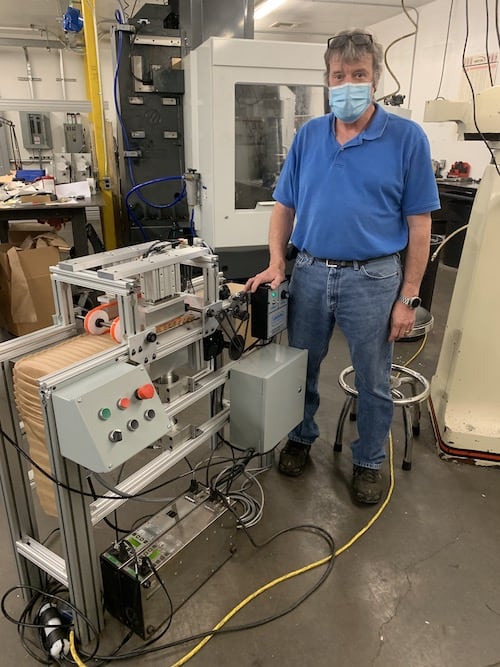
The drive to disrupt and improve on existing practices is part of Wolfson’s DNA. Educated as a civil engineer in South Africa, he moved with his family in 1982 to the United States, where he designed and built a modular sawmill — a new concept at the time. Among the items produced at the mill were box-spring components. When Wolfson’s contract expired with the sawmill, he joined the National Frame Co., a supplier of box-spring components to the bedding industry. This, in turn, led to a position with International Bedding Corp., where Wolfson was part of a team that designed that company’s first pocketed spring mattresses and the machinery to manufacture them.
“I had to quickly educate myself on the mechanical side of engineering,” Wolfson says. “As a newcomer, I felt the best starting point was to think about things from the manufacturer’s point of view: What type of machine would they need to create a quality product? What works, and what needs to change? That turned out to be the right approach and a mindset I still use today.”
While working with IBC, Wolfson was introduced to inventor Walter Stumpf, a former chief engineer at Simmons. After leaving IBC, Wolfson and Stumpf launched W&S Technique in Atlanta, where, together with Siddall and Hilton, an English company producing pocket coils, they formed Sidhil Tech and developed a new type of pocket coiler for mattress makers. The machine Sidhil created made a pocketed spring with a center seam rather than a conventional top seam, allowing for a “true” two-sided mattress, Wolfson says. A patent for the system was granted in 2001.
“Our patented manufacturing system eliminates the need to turn the coil in its pocket during the manufacturing process, reducing stress on the nonwoven fabric encasing the coil,” Wolfson says. “This system creates a center closing seam that eliminates the false loft created by the top seam in conventional pocket coil construction.”
That same year, Sidhil Tech introduced a system to heat and cool coils before inserting them into fabric pockets. The process was unique to the industry at the time and created an even more durable innerspring, Wolfson says.
Toward the end of 2001, Wolfson re-engineered the coiler to produce different coil heights with varying convolution counts. That development enables the production of a wide variety of innerspring units, ranging from a 2-inch Micro coil with 1,344 coils in a queen size to a 9-inch Mega coil with 1,088 coils in a queen.
While the machines Sidhil Tech developed received good reviews from producers, sales proved to be limited, Wolfson says, “as most potential customers preferred to source the pocket spring units for their beds prebuilt from existing sources rather than making their own.”
In 1999, Wolfson opted to take the equipment Sidhil Tech had developed and start another company — Texas Pocket Springs Technology— producing QuadCoil pocket spring modules for mattress manufacturers in Louisiana, Oklahoma, Texas and other nearby states. Patented by Wolfson in 2000, QuadCoil is an innovative pocket spring unit in which two rows of pocketed springs are ultrasonically fused together to create a more stable module.
“Our patented manufacturing process eliminates leaning coils, which results in a more consistent feel and a superior support system,” Wolfson says. “It also allows our pocket spring modules to be preassembled into zoned mattress solutions customized for our customers’ specific product requirements. Our unique pocket approach creates a durable, stable innerspring that is as comfortable as it is easy to handle in the manufacturing process.”
Shifting paradigms
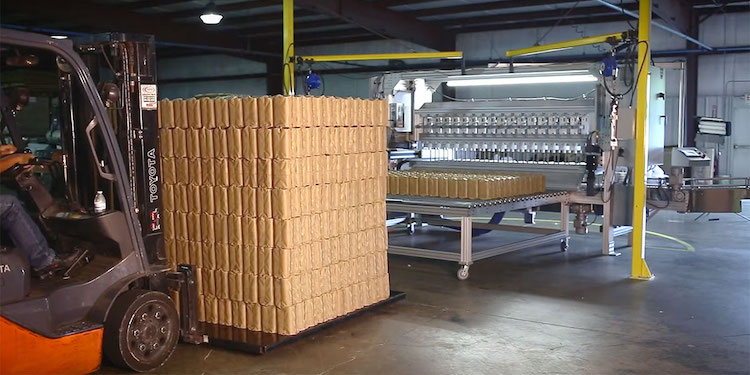
Today, Texas Pocket Springs produces belted pocket spring modules for a growing base of regional bedding and seating manufacturers, as well as national and boxed bed brands from coast to coast. (Its belted spring technology bands four coils together with the center seam, creating the QuadCoil module.) “We ship both full truckloads and LTL (less-than-truckload) all over North America,” Wolfson says.
The company’s line includes a wide variety of spring heights, coil diameters and wire gauges. Standard coil diameters run from 2 to 3 1/8 inches, and heights from 2 ½ inches to 9 inches. The most popular heights for coils are 6 inches and 8 inches. Ten-inch modules, which Texas Pocket Springs used to offer, “have fallen by the wayside,” Wolfson says. At the same time, systems with shorter spring heights of 3 ½ inches or 4 inches have become popular because of their suitability for boxed bed applications.
In addition, the company produces custom innerspring units for many of its customers. “Some customers want five zones, while others feel three is sufficient,” Wolfson says. “Some want each zone to be equal, and others want them bigger in the middle and smaller on the side. We can produce coils to meet their exact requirements on a very small scale of just five units or larger runs of a thousand or more.”
Texas Pocket Springs also can provide special treatments for mattress edges. The company has long promoted the concept that edge-to-edge wrapped coils create a more durable mattress, and it offers a unit in which the outer perimeter rows are made with a heavier gauge wire, creating a seating edge that prevents people from sliding off when sitting on the mattress perimeter.
Texas Pocket Springs builds its springs in a 75,000-square-foot facility with a team of 50. To find and train skilled technicians to run its proprietary machinery, the company has developed strategic alliances with several local community colleges. Texas Pocket Springs supports the program with funding — and jobs.
“Once we get through this pandemic, I see a very bright future for our product line and our company,” Wolfson says. “I believe that mattresses made with pocketed coils offer a superior sleeping system. They offer the best range of comfort and support, since it is easy to adjust the number, height, gauge and convolution of the coils to deliver whatever combination of support and comfort is preferred.” Encased coil mattresses, he adds, also work well with adjustable bases, offering independent movement with minimal motion transfer.
Texas Pocket Springs sources the components for its machines and pocket spring products in the United States. Ninety-six percent of its steel is recycled and, in recent months, Texas Pocket Springs has started shipping an “eco-friendly innerspring glueless unit made with organic calico fabric infused with polylactic acid.” The new unit is designed for bed producers marketing all-natural or organic lines.
The “new normal”
Before the novel coronavirus pandemic hit, the company was on track for its best year ever, with sales up substantially in each of the first three months. Sales fell dramatically in April, when Texas issued stay-at-home orders, but by Memorial Day, the plant had returned to about 50% of capacity.
“Retailers are reopening, and manufacturers are gearing up to fill up their stores with fresh product,” Wolfson says, adding that some consumers are using their federal stimulus money to purchase new bedding. “We expect to have a good summer, as manufacturers and retailers catch up with pent-up demand. But things will be tough over the longer term. Millions of people have lost their jobs and many are suffering terribly, and it’s going to take time to turn that around.”

While Wolfson is optimistic about the industry’s prospects for recovery, the way business is done is likely to change, he says. “E-commerce may become the preferred way to buy a mattress as consumers look to minimize their social exposure,” he says. “That, in turn, may call for new ways of thinking about how innerspring mattresses are built.”
As younger consumers emerge as a bigger force in the marketplace, their desire to own higher-ticket items, such as cars or furnishings, also may be different than past generations, Wolfson speculates. “Rather than buying a new mattress and holding onto it for eight years or more, they might prefer to lease a new mattress for a year or two, and when that time is up, they’ll trade it in for a new model,” he says.
In the future, Wolfson is confident recycling will play a bigger and bigger role in daily life. “There will be more attention paid to repurposing and reclaiming materials rather than just throwing things away,” he says. Coming out of the pandemic, consumers are likely to have a “heightened sense of responsibility to each other and the environment,” Wolfson says. “This shift may cause legislators to expect an even greater level of responsibility from manufacturers — and the mattress industry may be required to adapt.” Wolfson believes it is only a matter of time before other states follow the lead of California, Connecticut and Rhode Island and impose more stringent mattress recycling regulations.
The Mattress Recycling Council has worked hard to efficiently collect old mattresses in those three states that have enacted mandatory mattress recycling laws, but the cost of separating the fabric from the coil in encased coil mattresses makes the process impractical. Many units still are sent to landfills, hampering recycling’s ultimate goal of converting waste into reusable materials.
Preparing for growth
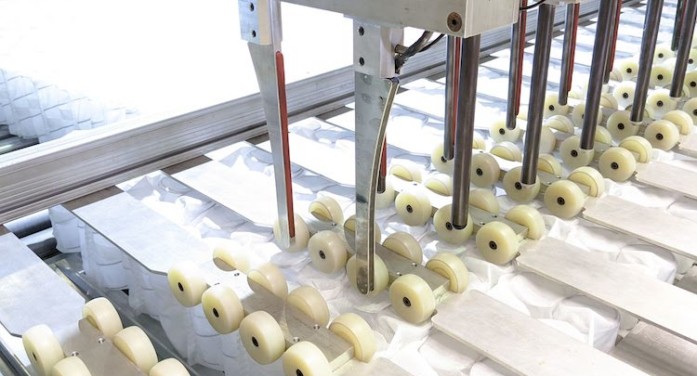
Under the supervision of plant manager Rolando Aguirre, who has been with Texas Pocket Springs from its start, the company has doubled its production output since 2018. It plans on increasing production even more by using technology being developed and manufactured in-house.
Also playing a key role in Texas Pocket Springs’ growth is Kim Aguirre, director of customer service and relations. Aguirre joined the company in 2010 and “has created a culture of trust where all our customers are treated with the utmost loyalty and respect,” Wolfson says.
To help position his company for future growth, Wolfson recently appointed his son, Matan Wolfson, director of sales and marketing. For the past three years, Matan Wolfson had served as executive vice president of Wildkin, a maker of children’s furniture and accessories, and before that he was a sales director for KidKraft, which offers children’s playsets, furniture and toys. In his new role, Matan Wolfson will hire and direct Texas Pocket Springs’ first sales force.
“Matan and his team will be charged with growing our customer base and expanding our presence online,” Martin Wolfson says. “That will free me up to do what I do best, which is developing new technology.”
Earlier this year, Texas Pocket Springs launched a new website at PocketSpringsTech.com. The site is designed to promote its pocketed coil capabilities, as well as its coiling machines, which it now markets for use by other producers. Texas Pocket Springs also has a corporate website at TexasPocketSprings.com.
“We started selling our machines two years ago at the ISPA EXPO,” Wolfson says. “So far, we’ve sold equipment to mattress makers in the U.S., England and Belgium. We’re seeing particularly strong interest in glueless technology in Europe because they are much farther along on the sustainability curve.”
AT A GLANCE
Company
Texas Pocket Springs Technology
Headquarters
Alvarado, Texas, where it operates a 75,000-square-foot facility staffed by a team of 50
Specialty
Belted pocket spring modules for bedding and upholstered furniture, along with machinery for encased coil production
History
Sidhil Tech, a pocket spring machinery inventor and manufacturer, was founded in 1996 by Martin Wolfson and Walter Stumpf, along with the English company Siddall and Hilton. Texas Pocket Springs, with a business model focused on pocket spring production, was founded by Wolfson in 1999.
Ownership
Founder Martin Wolfson and family
In England, luxury bed maker Harrison Spinks acquired a GlueLess Innerspring Assembly for use in making its pocketed coils. Harrison Spinks also serves as the sole distributor for Texas Pocket Springs’ machines in Western and Eastern Europe and the Far East.
“We want to help more manufacturers make their own pocketed coil units,” Wolfson says. “By adding one of our assemblers to their plant, they can reduce costs and enhance efficiencies.”
Mattress manufacturers can produce their own coils and use the GlueLess Innerspring Assembly to make their own innerspring units, or Texas Pocket Springs can ship them QuadCoil modules, which they can then assemble into innerspring units by using the assembler.
To support the use of its machines, Texas Pocket Springs offers comprehensive training at its facility. The company also provides free parts and service for the life of the machine for those customers entering into a licensing agreement as part of their purchase. If a customer is faced with any downtime due to service issues, Texas Pocket Springs has the capability to produce any needed coils and modules in its own plant.
“We always do what is in our customers’ interest and their customers’ interest, even if it costs us money,” Wolfson says. “That’s always been our mantra because without the loyalty of our customers, we wouldn’t be in business.”




